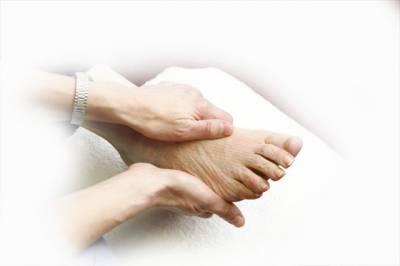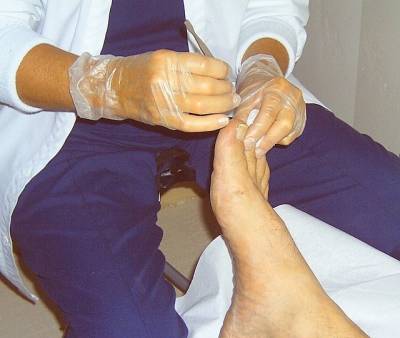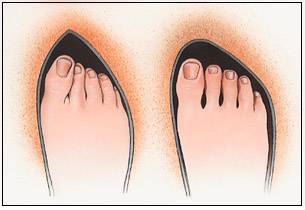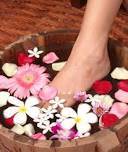Sight N' Steps Blog
- Font size: Larger Smaller
- Subscribe to this entry
- Bookmark

Foot care
Research has shown that people with diabetes who take good care of their feet and protect their feet from injury, are much less likely to develop foot ulcers.
Good foot care includes:
- Looking carefully at your feet each day, including between the toes. If you cannot do this yourself, you should get someone else to do it for you:Looking is particularly important if you have reduced sensation in your feet, as you may not notice anything wrong at first until you look.If you see anything new (such as a cut, bruise, blister, redness or bleeding) and don't know what to do, see your chiropodist.
- Do not try to deal with corns, calluses, verrucas or other foot problems by yourself. They should be treated by a health professional such as a chiropodist. In particular, do not use chemicals or acid plasters to remove corns, etc.
- Use a moisturising oil or cream for dry skin to prevent cracking. However, you should not apply it between the toes as this can cause the skin to become too moist which can lead to an infection developing.
- Look out for athlete's foot (a common minor skin infection). It causes flaky skin and cracks between the toes, which can be sore and can become infected. If you get athlete's foot, it should be treated with an antifungal cream.

- Cut your nails by following the shape of the end of your toe. But, do not cut down the sides of the nails, or cut them too short, or use anything sharp to clean down the sides of the nails. These things may cause damage or lead the nail to develop an ingrown nail. If you cannot see properly do not try to cut your nails, as you may cut your skin. You should ask someone else to do it.Wash your feet regularly and dry them carefully, especially between the toes.
- Do not walk barefoot, even at home. You might tread on something and damage your skin.Always wear socks with shoes or other footwear. However, don't wear socks that are too tight around the ankle, as they may affect your circulation.

- Shoes, trainers and other footwear should:Fit well to take into account any awkward shapes or deformities (such as bunions).Have broad fronts with plenty of room for the toes.Have low heels to avoid pressure on the toes.Have good laces, buckles or Velcro® fastening to prevent movement and rubbing of feet within the shoes.When you buy shoes, wear the type of socks that you usually wear. Avoid slip-on shoes, shoes with pointed toes, sandals and flip-flops. Break in new shoes gradually.Always feel inside footwear before you put footwear on (to check for stones, rough edges, etc).If your feet are an abnormal shape, or if you have bunions or other foot problems, you may need specially fitted shoes to stop your feet rubbing.
- Tips to avoid foot burns include: checking the bath temperature with your hand before stepping in; do not use hot water bottles, electric blankets or foot spas; do not sit too close to fires.

Blog posted from 300 Rossland Road East, Ajax, ON L1Z 0K4, Canada View larger map
- Oakleys Are Too Sporty For Me....Hmmmm Think Again...
- Do $600 Nikon Lenses Really Benefit My Eyesight?
- Am I The Right Candidate For Custom Orthotics? - Sight N' Steps Feb 03
- I Need To Correct My Back Pain, Not My Foot!! How Does That Even Help? - Sight N' Steps Jan 08
- Truth Behind Sight N’ Steps Claims To Be The Best in Customer Satisfaction!! - Sight N' Steps May 11
- Truth Behind Maui Jim's Nine-Layer-Polarized-Filter Sunglasses - Sight N' Steps Jul 26
- Let Us Care For Your....Sight N' Steps - Sight N' Steps Dec 28
